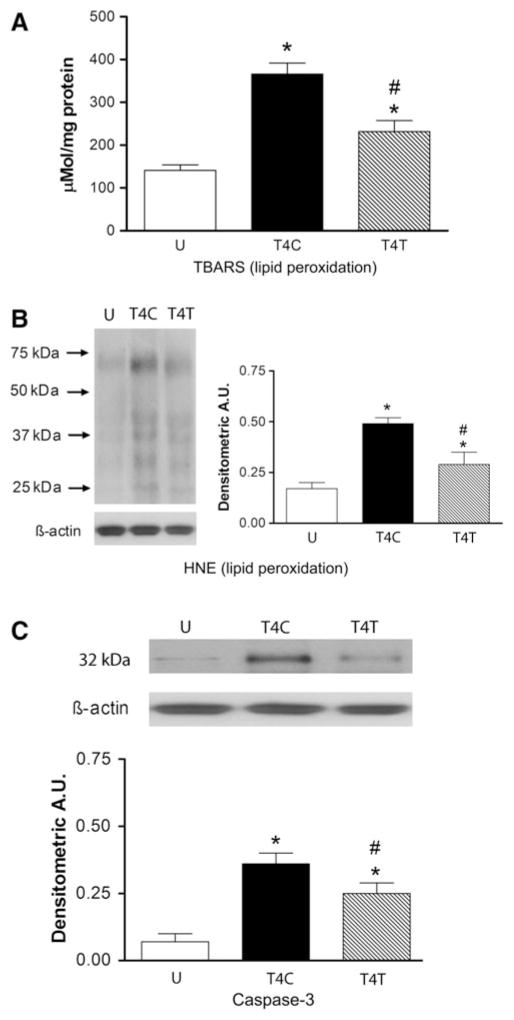FIG. 3.
The anti-α4 treatment decreases lipid peroxidation and cell death in the lung at 24 h after spinal cord injury (SCI). (A) Lipid peroxidation was assessed by the thiobarbituric acid reactive substance (TBARS) assay for aldehydes, including malondialdehyde in lung homogenates from uninjured (n = 6), T4C (n = 4), and T4T (n = 5) rats, and also by Western blotting for 4-hydroxynonenol (HNE)-bound proteins (B) in most of these rats (n = 4 per group). Western blot illustrates an example of expression of HNE-bound proteins with different molecular weights. The bar graphs display the sums of areas of all bands. (C) Caspase-3 expression was also evaluated by Western blotting in the homogenates from these rats (n = 4 for all groups; *significantly different from uninjured; #significantly different from T4 SCI controls; p ≤ 0.05 by Student Neuman-Keuls test; U, uninjured rats; T4C, T4 control SCI rats; T4T, T4 SCI rats treated with the anti-α4 monoclonal antibody [mAb]; A.U., arbitrary units).

